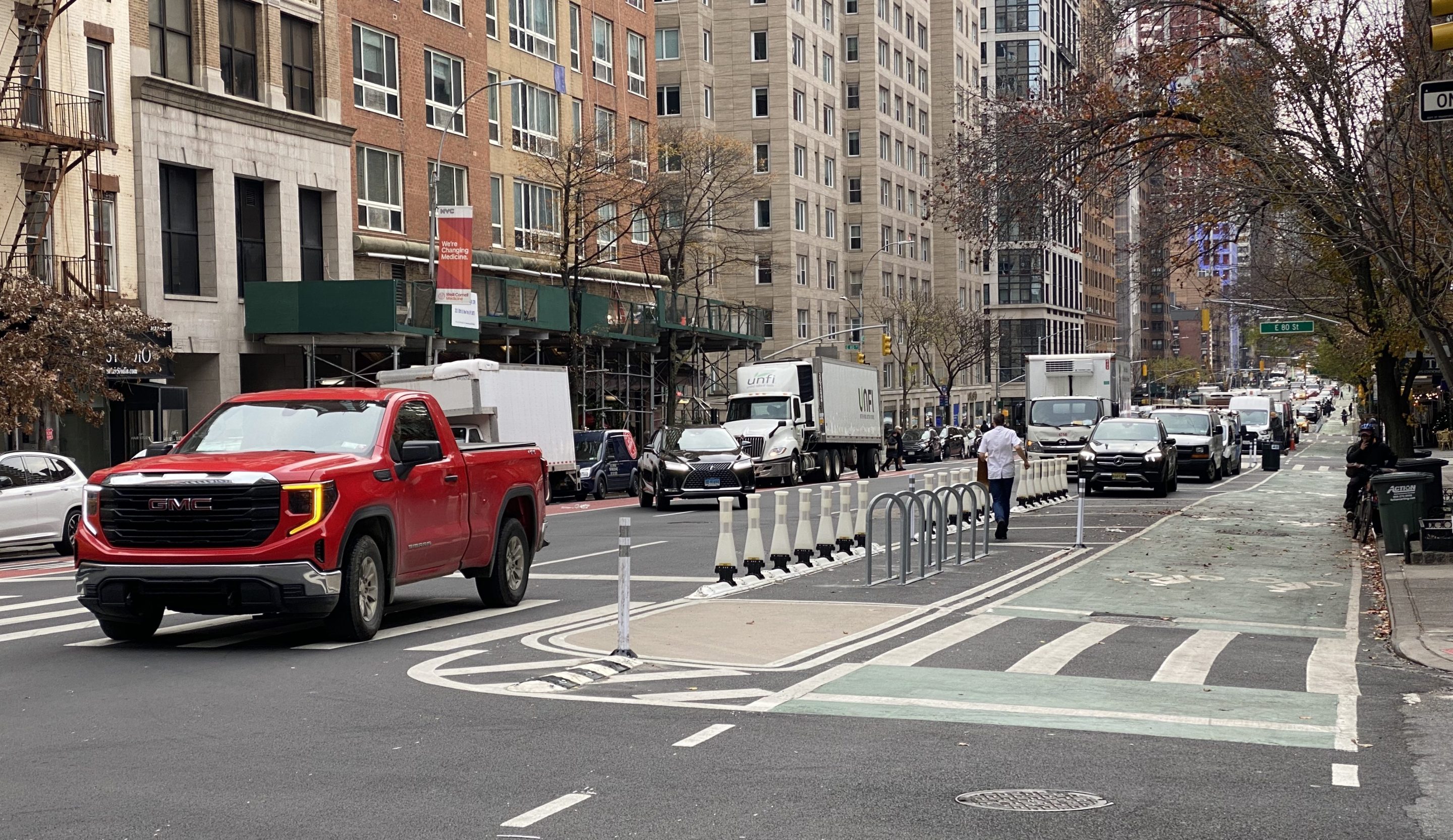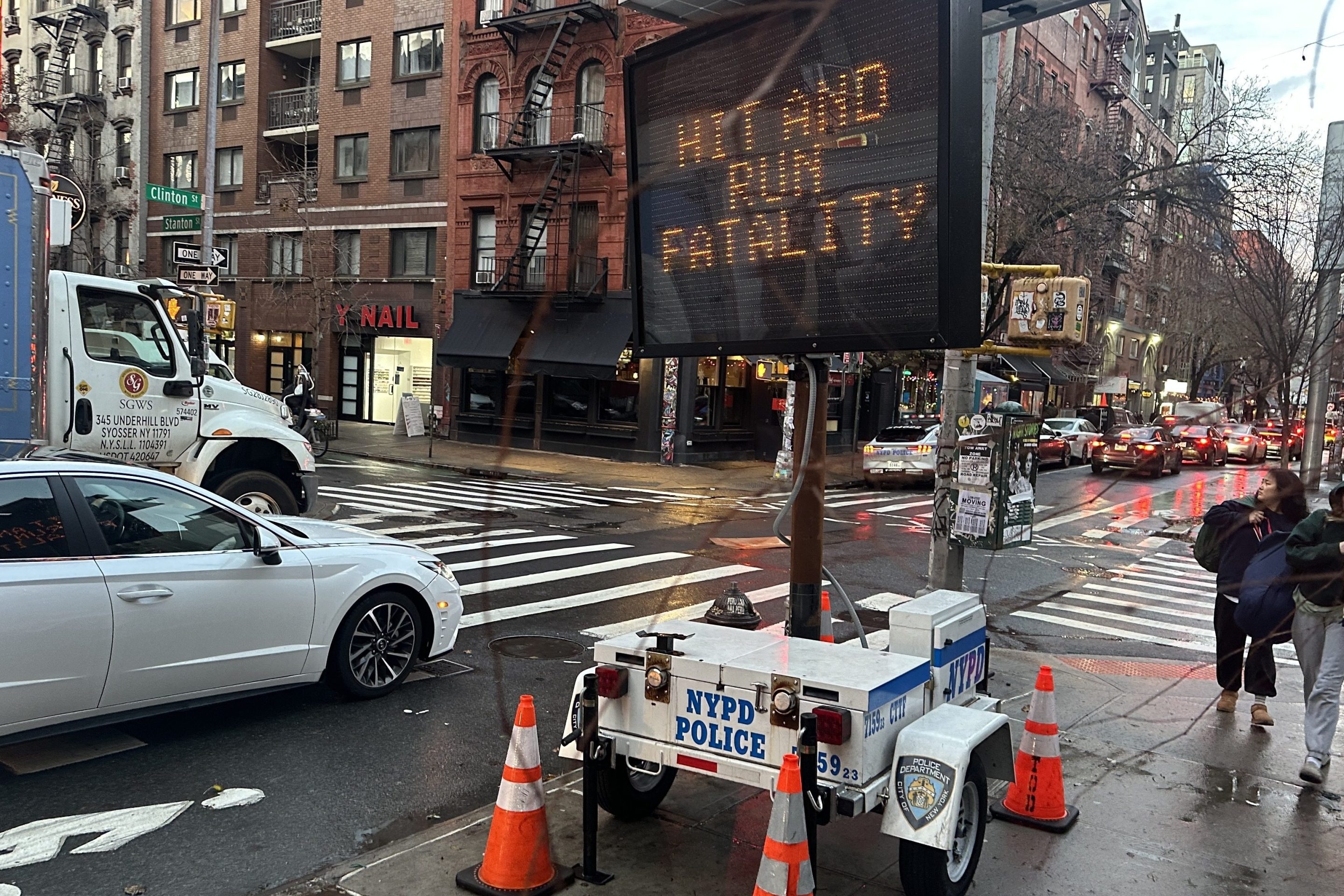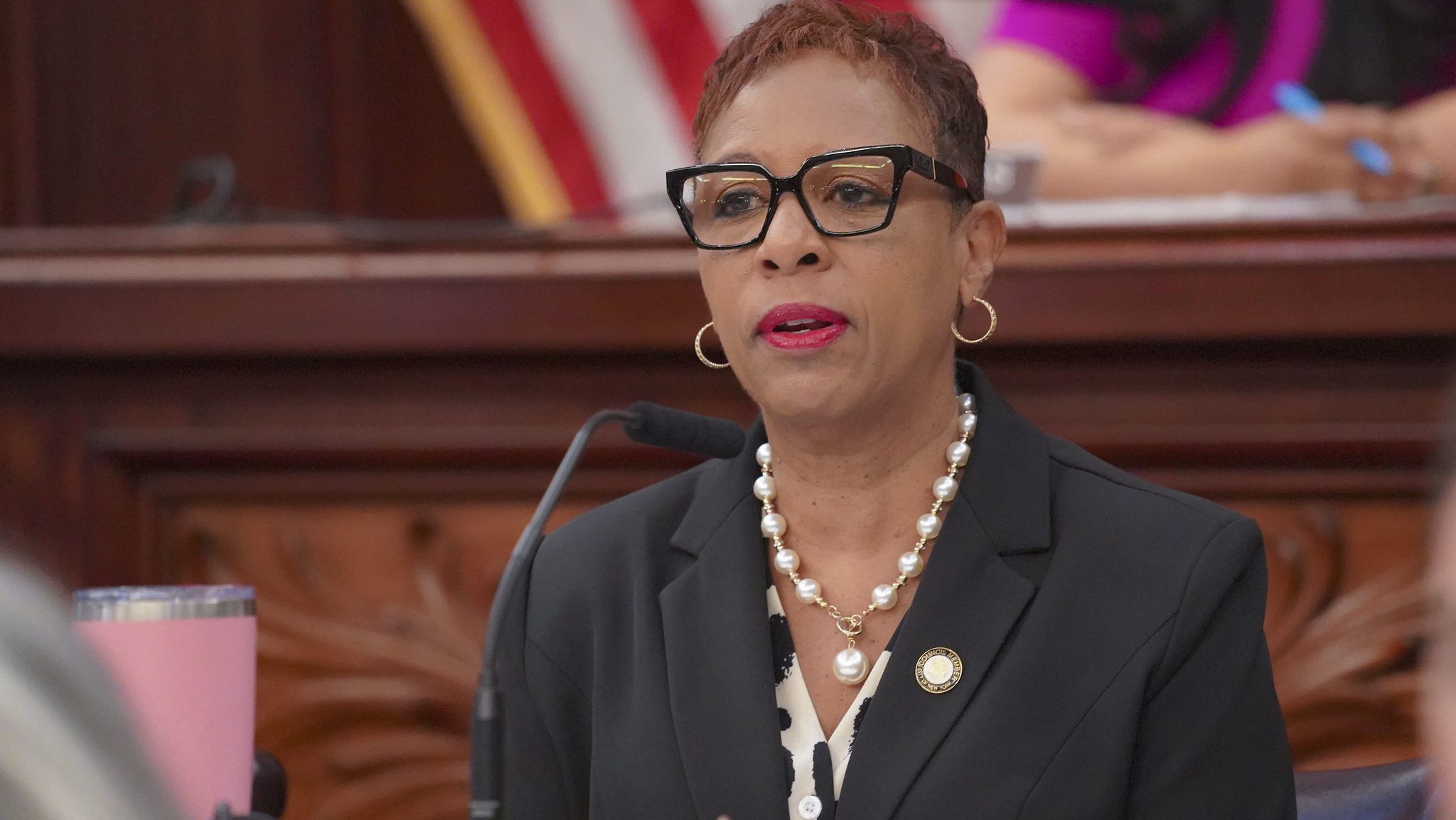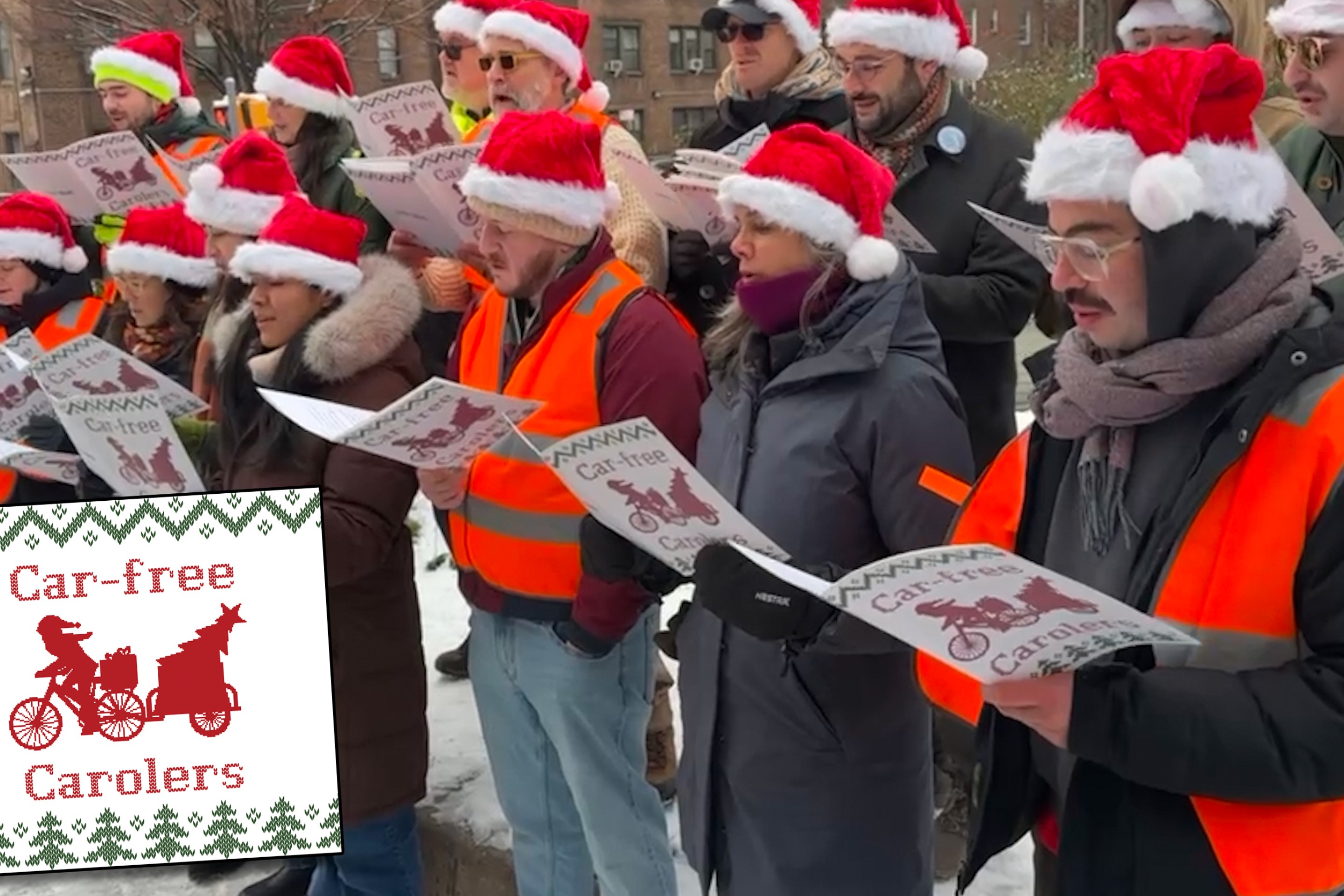Mayor Adams wants to more than double annual city funding for "hardened" infrastructure to prevent drivers from parking close to crosswalks, according to his proposed budget released on Thursday.
Adams wants to increase the annual funding from $1.38 million a year to $3.85 million "to support hardened daylighting" at intersections with "hundreds" of "fixtures" like "granite blocks or bike racks," according to a summary released by City Hall's Office of Management and Budget.
"We are ... keeping New Yorkers safe on our streets ... by improving road safety at hundreds of targeted traffic intersections," Adams said during a press conference at City Hall on Thursday.
State law already bans parking within 20 feet of intersections, but the city has long exempted itself to make space for more private car storage, even as 55 percent of pedestrian deaths and 79 percent of pedestrian traffic injuries happen at intersections, according to the Department of Transportation.
Gov. Hochul this week proposed undoing the carveout specifically for corners near elementary schools. A growing chorus of grassroots activists and lawmakers at both levels of government have pushed to end the Big Apple's loophole entirely.
Advocates lauded the mayor for dedicating resources to the lifesaving measure.
"Hardening is what makes daylighting actually work, so the budget item is really crucial to expanding it across the city," said Jackson Chabot, Director of Advocacy and Organizing at Open Plans, which shares a parent organization with Streetsblog. "These funds give DOT the tools and mandate to do daylighting right."
The moves come amid growing support on the City Council for legislation to end the city's longstanding exemption. The Council proposal would also require DOT add barriers to 1,000 intersections a year. Another bill in the state legislature would also remove the city's carveout.
Mayor Adams pledged to daylight 1,000 intersections per year after an NYPD tow truck driver killed a 7-year-old boy at an intersection with poor corner visibility in Brooklyn in 2023. DOT claims to have completed daylighting at "over 1,000 locations" in 2024, according to spokesperson Will Livingston.
However, the agency declined to provide a list of those locations. DOT fudged its numbers when it released a progress report last year that counted multiple corners at the same intersections.
Daylighting is a well-established, national and international standard. Other jurisdictions, such as nearby Hoboken, have adopted the street redesign on a mass scale. The Square Mile City saw a 30-percent decline in pedestrian injuries at corners where officials installed flexible bollards has not logged any traffic deaths since 2017.
But New York City officials have resisted expanding daylighting to every street, citing worries that drivers would make faster and more dangerous turns at corners without parking.
"Daylighting ... must be implemented with physical infrastructure in the newly opened space to prevent vehicles from turning more quickly," DOT Commissioner Ydanis Rodriguez said at a Council hearing two years ago. "We would like to retain flexibility to determine which treatments are the most appropriate in each location."
The agency previously found a slightly higher percentage of bike and pedestrian injuries in left-turn crashes at intersections between two one-way streets that had a hydrant at the corner — however, daylighting also led to slightly lower injury rates at other intersections, according to a study of 3,000 junctions between 2009-2013 that Streetsblog previously obtained via Freedom of Information Law request.
The city's movement to enact universal daylighting started in earnest after a driver killed 7-year-old Dolma Naadhun in early 2023 at a Queens intersection that would have had daylighting under the state law that the city refuses to carry out.
The push was galvanized by organizers on community boards and online Reddit threads, followed by lawmakers joining the calls for the common-sense design.






